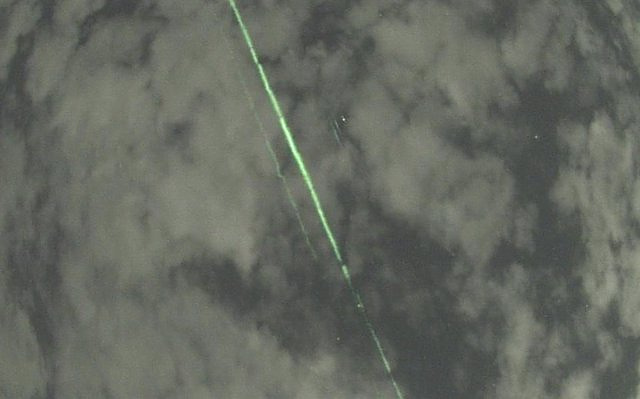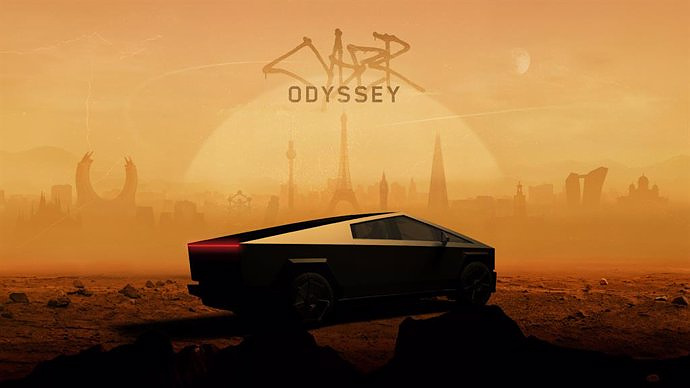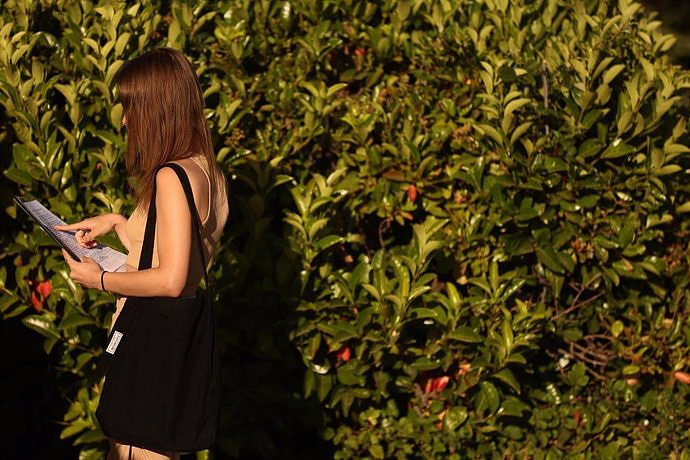MADRID, 18 Abr. (EUROPA PRESS) -
Cameras for the observation of meteorites installed near Mount Fuji, in Japan, accidentally captured laser beams from NASA's ICESat-2 satellite as it passed over the Japanese country.
The glowing green lines that appeared in a video taken on September 16, 2022 were initially a mystery, until Hiratsuka City Museum curator Daichi Fujii, who operates the cameras, traced their provenance to the satellite of the POT.
It's the first time the ICESat-2 team has seen images of the satellite's green laser beams being transmitted from orbit to Earth, Tony Martino, ICESat-2 instrument scientist at the Goddard Space Flight Center in New York, said in a statement. NASA in Greenbelt, Maryland.
"ICESat-2 appeared to be almost directly overhead, with the beam hitting the low clouds at an angle," Martino said. "To see the laser, you have to be in exactly the right place, at the right time, and you have to have the right conditions."
ICESat-2 launched in September 2018 with a mission to use laser light to measure the height of Earth's ice, water, and land surfaces from space. The laser instrument, called lidar, fires 10,000 times per second, sending six beams of light to Earth. Precisely calculate the time it takes for individual photons to bounce off the surface and return to the satellite. Computer programs use these measurements to calculate ice losses from Greenland and Antarctica, look at how many polar oceans are frozen, determine the heights of freshwater reservoirs, map shallow coastal regions, and more.
Fired from hundreds of kilometers into space, laser light is not harmful. In fact, it is difficult to detect. If someone stood directly under the satellite and looked up, the laser would have the force of a camera flash 100 meters away, Martino said.
Amateurs have tried to photograph the satellite as it passed, and in a couple of cases they were able to capture photos, one from southern Chile and one from Oklahoma.
The beam is even more difficult to capture, Martino noted, since cameras and eyes need laser light to reflect off something to see the beam from the side. That's where weather conditions come in.
However, on the night that ICESat-2 passed over the city of Fuji, there were enough clouds to scatter the laser light, making it visible to cameras, but not enough to block the light completely. There were actually two thin layers of clouds over Japan that night — information Martino found by analyzing ICESat-2 data, which shows clouds and the ground below.
With the precise location of the satellite in space, the location of the lightning strike, the coordinates of where Fujii's cameras were installed, and the addition of cloud conditions, Martino was able to definitively confirm that the light rays were coming from of Laser of ICESat-2.

 Exploring Cardano: Inner Workings and Advantages of this Cryptocurrency
Exploring Cardano: Inner Workings and Advantages of this Cryptocurrency Seville.- Economy.- Innova.- STSA inaugurates its new painting and sealing hangar in San Pablo, for 18 million
Seville.- Economy.- Innova.- STSA inaugurates its new painting and sealing hangar in San Pablo, for 18 million Innova.- More than 300 volunteers join the Andalucía Compromiso Digital network in one month to facilitate access to ICT
Innova.- More than 300 volunteers join the Andalucía Compromiso Digital network in one month to facilitate access to ICT Innova.-AMP.- Ayesa acquires 51% of Sadiel, which will create new technological engineering products and expand markets
Innova.-AMP.- Ayesa acquires 51% of Sadiel, which will create new technological engineering products and expand markets Prominent American writer Paul Auster dies at 77 from lung cancer
Prominent American writer Paul Auster dies at 77 from lung cancer RELEASE: Rendeavor Expands High-Speed Internet Access to Local Communities Around Tatu, Kenya
RELEASE: Rendeavor Expands High-Speed Internet Access to Local Communities Around Tatu, Kenya Real Madrid saves a draw in Munich and will appeal again to the Bernabéu
Real Madrid saves a draw in Munich and will appeal again to the Bernabéu The Congress of Argentina approves the omnibus law that allows the privatization of some public companies
The Congress of Argentina approves the omnibus law that allows the privatization of some public companies How Blockchain in being used to shape the future
How Blockchain in being used to shape the future Not just BTC and ETH: Here Are Some More Interesting Coins Worth Focusing on
Not just BTC and ETH: Here Are Some More Interesting Coins Worth Focusing on Valencia unanimously approves the ordinance to allocate spaces to test innovative initiatives
Valencia unanimously approves the ordinance to allocate spaces to test innovative initiatives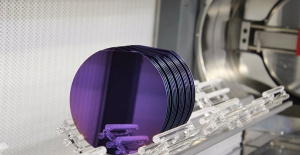 UPV researchers promote a paid master's degree as a "talent factory" in integrated photonics
UPV researchers promote a paid master's degree as a "talent factory" in integrated photonics A spin-off of the UV works on obtaining high-resolution 3D biomedical images in real time
A spin-off of the UV works on obtaining high-resolution 3D biomedical images in real time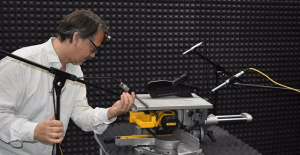 They create a bank of machinery sounds to prevent breakdowns through artificial intelligence
They create a bank of machinery sounds to prevent breakdowns through artificial intelligence A million people demonstrate in France against Macron's pension reform
A million people demonstrate in France against Macron's pension reform Russia launches several missiles against "critical infrastructure" in the city of Zaporizhia
Russia launches several missiles against "critical infrastructure" in the city of Zaporizhia A "procession" remembers the dead of the Calabria shipwreck as bodies continue to wash up on the shore
A "procession" remembers the dead of the Calabria shipwreck as bodies continue to wash up on the shore Prison sentences handed down for three prominent Hong Kong pro-democracy activists
Prison sentences handed down for three prominent Hong Kong pro-democracy activists ETH continues to leave trading platforms, Ethereum balance on exchanges lowest in 3 years
ETH continues to leave trading platforms, Ethereum balance on exchanges lowest in 3 years Investors invest $450 million in Consensys, Ethereum incubator now valued at $7 billion
Investors invest $450 million in Consensys, Ethereum incubator now valued at $7 billion Alchemy Integrates Ethereum L2 Product Starknet to Enhance Web3 Scalability at a Price 100x Lower Than L1 Fees
Alchemy Integrates Ethereum L2 Product Starknet to Enhance Web3 Scalability at a Price 100x Lower Than L1 Fees Mining Report: Bitcoin's Electricity Consumption Declines by 25% in Q1 2022
Mining Report: Bitcoin's Electricity Consumption Declines by 25% in Q1 2022 Oil-to-Bitcoin Mining Firm Crusoe Energy Systems Raised $505 Million
Oil-to-Bitcoin Mining Firm Crusoe Energy Systems Raised $505 Million Microbt reveals the latest Bitcoin mining rigs -- Machines produce up to 126 TH/s with custom 5nm chip design
Microbt reveals the latest Bitcoin mining rigs -- Machines produce up to 126 TH/s with custom 5nm chip design Bitcoin's Mining Difficulty Hits a Lifetime High, With More Than 90% of BTC Supply Issued
Bitcoin's Mining Difficulty Hits a Lifetime High, With More Than 90% of BTC Supply Issued The Biggest Movers are Near, EOS, and RUNE during Friday's Selloff
The Biggest Movers are Near, EOS, and RUNE during Friday's Selloff Global Markets Spooked by a Hawkish Fed and Covid, Stocks and Crypto Gain After Musk Buys Twitter
Global Markets Spooked by a Hawkish Fed and Covid, Stocks and Crypto Gain After Musk Buys Twitter Bitso to offset carbon emissions from the Trading Platform's ERC20, ETH, and BTC Transactions
Bitso to offset carbon emissions from the Trading Platform's ERC20, ETH, and BTC Transactions Draftkings Announces 2022 College Hoops NFT Selection for March Madness
Draftkings Announces 2022 College Hoops NFT Selection for March Madness